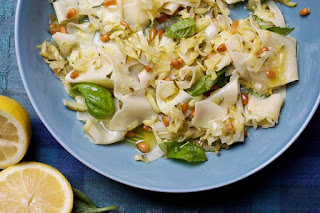Most of us are tuckered out after all the fun and family of the Christmas holidays. We grab whatever's in the refrigerator and make due for the next few meals. If you had ham, here's one easy and great soup that is filling and flavorful.
Spray a large crockpot with PAM to keep the soup from sticking. Turn to high cook.
Boil until tender:
5 pounds washed/unpeeled golden Yukon potatoes
Drain/let sit in cold water until cooled - with your fingers/peel off skin. Add skin to your composter.
Add to crockpot:
2 Cups Ham (Dice or pull into small bite sized pieces)
32 ozs. Chicken stock/broth
Add:
Salt and Pepper to taste
1 Tablespoon Worcestershire
1/2 teaspoon of Cayenne pepper (to taste)
Melt in fry pan:
1 heaping Tablespoon Bacon Grease
1 heaping Tablespoon Butter
And add:
1 Cup Finely Diced Carrots
1 Cup Finely Diced Celery
1 Cup Finely Diced Onions
Simmer until onions are translucent but not browned.
Add to crockpot:
Onion mixture and potatoes. Lightly mash with hand masher/leaving bite sized potato hunks. Cook until mixture begins to bubble at the sides. Scrape down.
Add:
1 Cup Milk (Add more if it becomes too thick)
1 Pound Vevetta cheese - cut into squares
Stir and when cheese has melted, turn crock pot temperature to Low.
If this begins to bubble, turn it down to warm. Cooking too hot will cause the cheese to stick to the sides and flavor won't be as good. Everything in this soup has been cooked prior to the crockpot so it's just a matter of letting flavors blend and holding warn until you're read to eat.
This makes a large crockpot full. It can be made in a soup pan but you must stir more often to keep it from burning/sticking. And when it's all warm and ready, it needs to be served rather than held.
This also freezes well. Simply stir to blend ingredients while reheating. Also, microwaveable but be sure to cover because it splatters.
As they used to say on the farm, this soup will "stick to your ribs" these cold winter days. It's good with a simple salad or fruit. It's almost too rich and thick for crackers or bread.
Cheesy Ham and Potato Soup
Spray a large crockpot with PAM to keep the soup from sticking. Turn to high cook.
Boil until tender:
5 pounds washed/unpeeled golden Yukon potatoes
Drain/let sit in cold water until cooled - with your fingers/peel off skin. Add skin to your composter.
Add to crockpot:
2 Cups Ham (Dice or pull into small bite sized pieces)
32 ozs. Chicken stock/broth
Add:
Salt and Pepper to taste
1 Tablespoon Worcestershire
1/2 teaspoon of Cayenne pepper (to taste)
Melt in fry pan:
1 heaping Tablespoon Bacon Grease
1 heaping Tablespoon Butter
And add:
1 Cup Finely Diced Carrots
1 Cup Finely Diced Celery
1 Cup Finely Diced Onions
Simmer until onions are translucent but not browned.
Add to crockpot:
Onion mixture and potatoes. Lightly mash with hand masher/leaving bite sized potato hunks. Cook until mixture begins to bubble at the sides. Scrape down.
Add:
1 Cup Milk (Add more if it becomes too thick)
1 Pound Vevetta cheese - cut into squares
Stir and when cheese has melted, turn crock pot temperature to Low.
If this begins to bubble, turn it down to warm. Cooking too hot will cause the cheese to stick to the sides and flavor won't be as good. Everything in this soup has been cooked prior to the crockpot so it's just a matter of letting flavors blend and holding warn until you're read to eat.
This makes a large crockpot full. It can be made in a soup pan but you must stir more often to keep it from burning/sticking. And when it's all warm and ready, it needs to be served rather than held.
This also freezes well. Simply stir to blend ingredients while reheating. Also, microwaveable but be sure to cover because it splatters.
As they used to say on the farm, this soup will "stick to your ribs" these cold winter days. It's good with a simple salad or fruit. It's almost too rich and thick for crackers or bread.












































